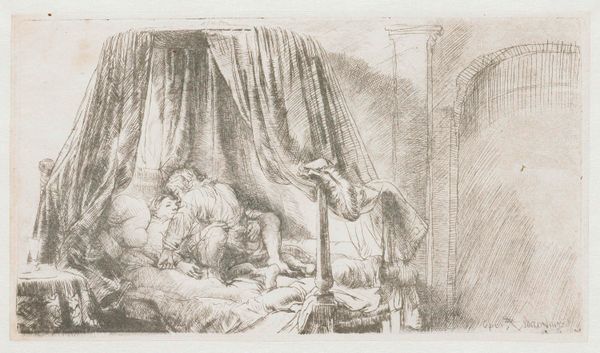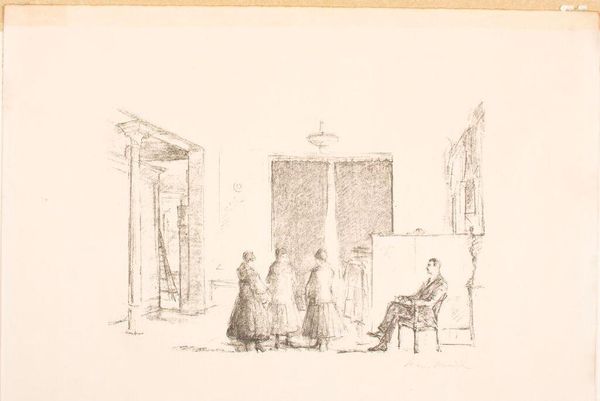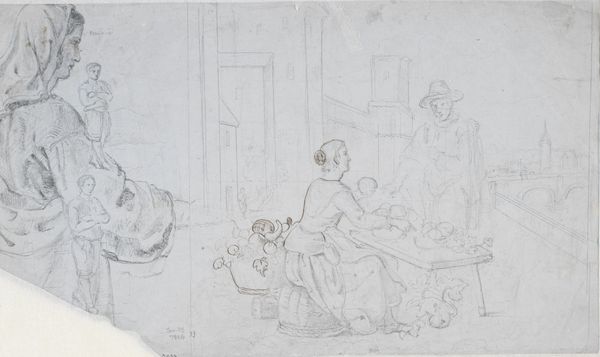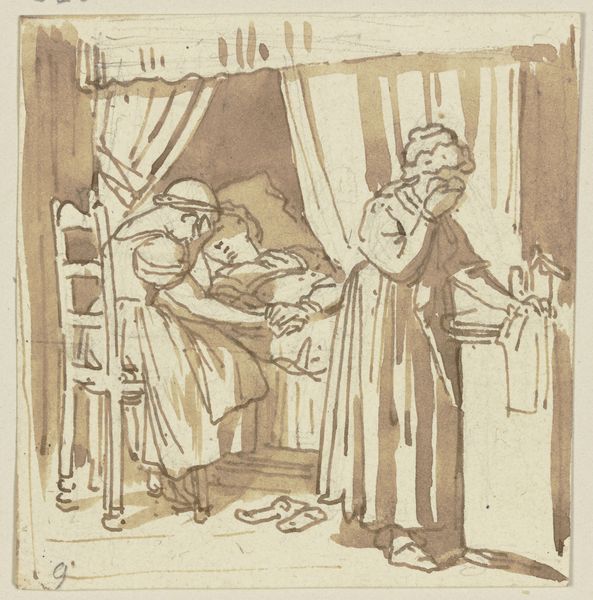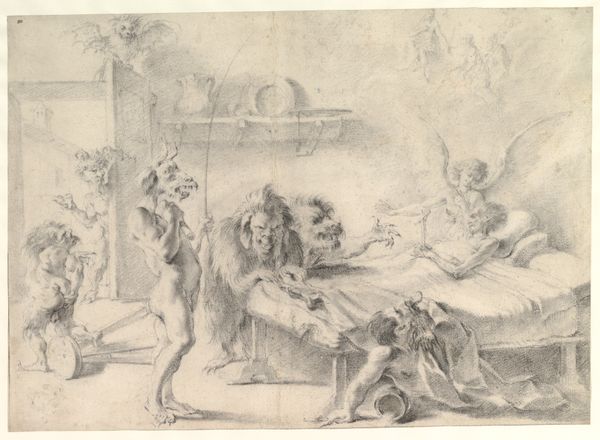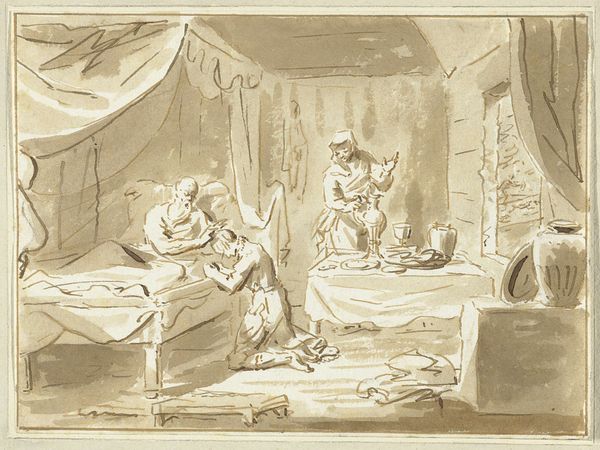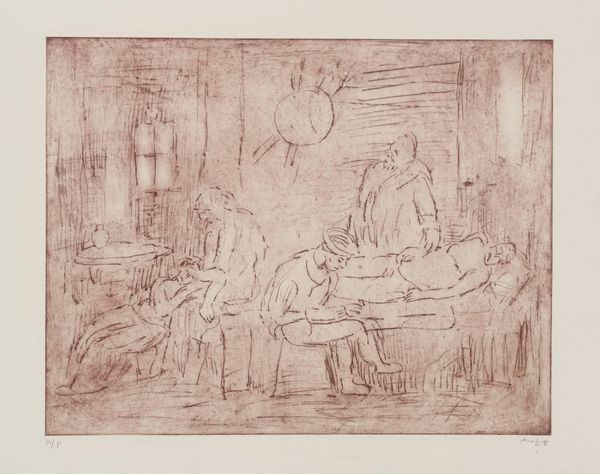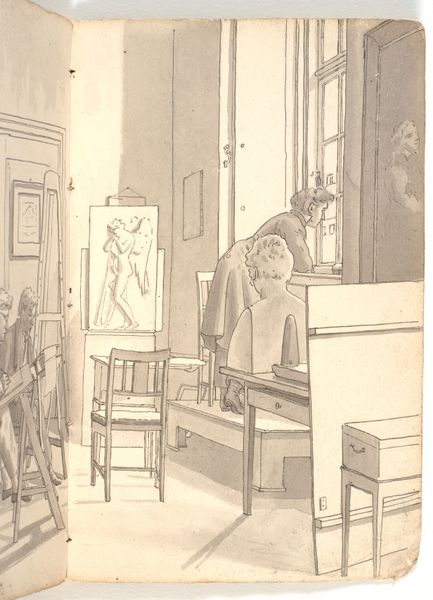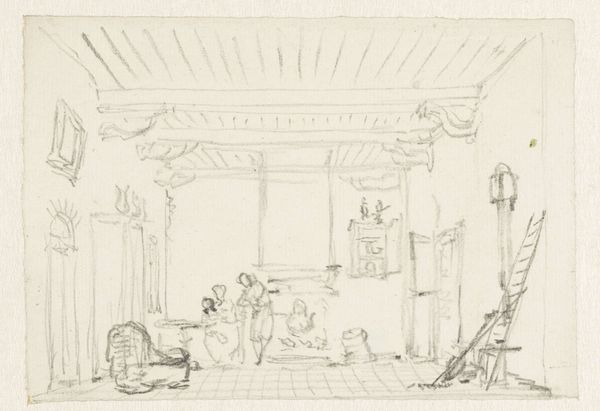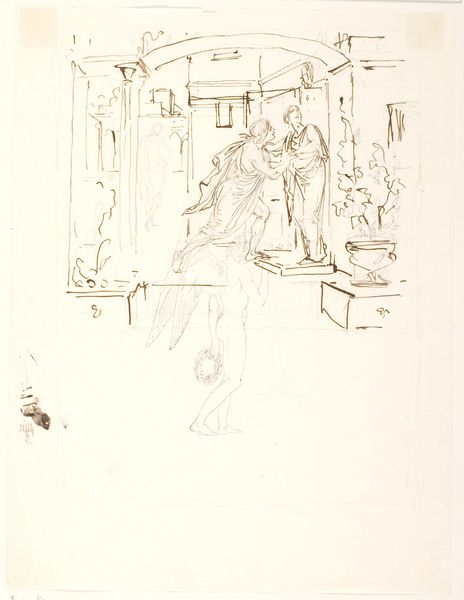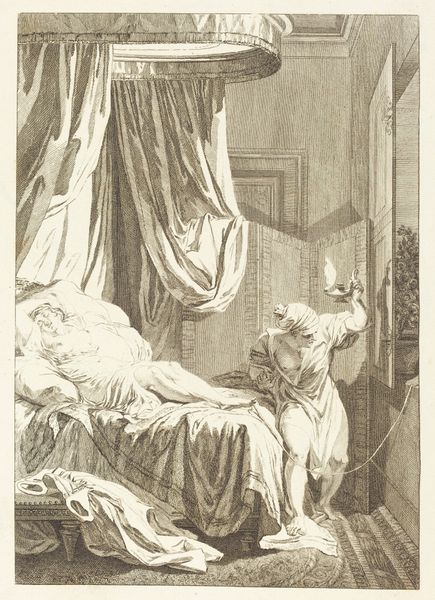
drawing, ink
#
drawing
#
narrative-art
#
charcoal drawing
#
figuration
#
ink
#
genre-painting
#
rococo
Copyright: Public domain
Editor: This sepia ink drawing, “Burn my shirt,” is attributed to Jean-Honoré Fragonard. It’s a playful scene with a woman lounging in bed as others rush in—it feels intimate, like a secret glimpse into someone's private world. How would you interpret this work? Curator: The Rococo period loved these types of narrative-art, filled with playful scenes and intimate boudoir settings. However, the presentation of leisure hides a rigid social structure, controlled by elites in the court. What appears informal is often heavily constructed, dictating access, imagery, and what constitutes "good" taste. Do you notice how the light is directed? Editor: Yes, it seems to come from an unseen window, highlighting the bed and the figures around it. It draws attention to the textures and details in the linens and dresses. Curator: Precisely. And note how the figures are arranged and how the bed functions almost as a stage. Fragonard and other artists like him played a significant role in visualizing these complex social dynamics. It reminds me of other depictions of interiority in paintings from the time – how they’re presented, consumed, and who gets to participate. How do you think these intimate depictions of wealthy women might have influenced or reflected societal norms during the Rococo era? Editor: I hadn't really considered the staged aspect before. Now I can see how the art could both reflect and shape opinions about what was normal or desirable at the time. Curator: Indeed. Consider the influence of the academies, salons, and patrons on artwork, especially within institutions of art. Keeping in mind the cultural and historical backdrop helps unveil some interesting insights! Editor: That’s a really insightful way to look at it. Thank you.
Comments
No comments
Be the first to comment and join the conversation on the ultimate creative platform.
